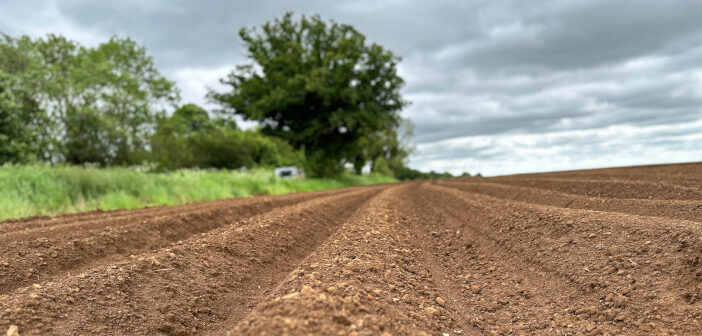Hutchinsons agronomist Jack Lane suggests nutrition will need to be a priority for many potato crops this season.
Across much of his Herefordshire area, planting is underway. March was relatively dry as soil conditions and temperatures improved but it followed an exceptionally wet winter. In some parts of the county up to 300 mm of rainfall was recorded between October and December,
That will have affected soil structure and health, so Jack advises getting the spade out to check soils before planting and see whether remedial action is needed to rectify issues such as compaction, poor drainage, or slumping.
With the wet weather likely to have caused some nutrient leaching too, he considers testing the current status as extremely valuable for finalising seedbed and early foliar nutrition programs. Alternative tests to the standard P, K, Mg, Ph, could be beneficial for understanding legacy phosphates that may be locked up within soils and not shown with standard soil analysis. “This lets growers make more informed decisions around starter fertiliser choices,” he adds.
Growers in the River Wye and Usk catchments are currently under particular pressure from regulators to reduce risks from phosphate pollution, so he feels anything he can do to improve nutrient use efficiency will be of benefit, both environmentally and financially.
Applying microgranular placement fertilisers, such as Primary-P, in close contact with the rhizosphere of the tuber at planting could be a really effective way of accurately meeting early crop requirements and stimulating root development. Far lower rates of fertiliser are used on soils with higher indices, where typically, high rates of conventional seedbed fertiliser are not necessarily required, or utilised effectively. He has seen good yield responses in potatoes, maize and other crops, so it is cost-effective and environmentally beneficial.
In the interests of bringing greater precision to nutrient management, it is also worth testing any organic manures or digestate before application, rather than relying on RB209 figures. “We have seen that actual levels can vary widely from published figures, so we need to know what is actually being applied in order to tailor nutrition programmes accordingly, and minimise the risks of under, or over-applying nutrients.”




